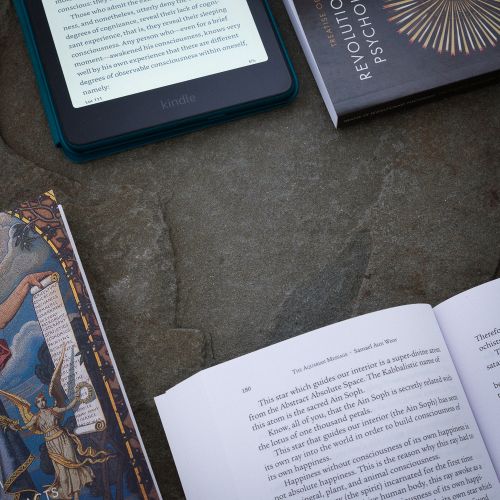Meditation
When the esotericist submerges himself into meditation, what he seeks is information. —Samael Aun Weor
Meditation is a state of consciousness that can retrieve information inaccessible to the senses or the mind.
In all of the authentic Asian traditions, the word meditation comes from the Sanskrit word ध्यान dhyana. If you have heard of zen, ch'an, jhana, sampten, they call came from ध्यान dhyana.
The word dhyana literally means “meditation.” But this word is relatively recent. It was derived from an older word: धी dhi, “imagination,” the ability to see images internally.
And that word came from an even older word: ध्यै dhya, "to see, to look."
So, meditation (ध्यान dhyana) is to see (ध्यै dhya), by consciously using the power of the consciousness to see images internally, धी dhi.
Stated another way, if you want to see reality (ध्यै dhya), the truth of the causes of your suffering, then learn to use धी dhi, conscious imagination. That is meditation (ध्यान dhyana). —To Meditate is to See Images
The state of meditation is the natural state of the consciousness, unconditioned, unfiltered, serene, perceiving, and understanding. In the state of meditation, by reflecting on a problem or question, we can find answers, insight, wisdom, guidance. In the state of meditation, we can perceive what is hidden from the physical senses. In the state of meditation, there is no debate, dogma, belief, or theory: there is only the experience of what is real.
Real meditation is:
- a form of perception
- a way of getting information
- a precise science
Since the state of meditation is the natural, normal state of the consciousness, anyone can access it, but first one must know what is preventing it from being our normal state. So, when we study meditation, we should not be trying to “make meditation happen,” but instead be recognizing what is preventing it from happening. Once the obstacles are removed, meditation happens on its own, immediately, spontaneously, in the same way that air escapes from a punctured ballon, or water escapes an overturned bottle. The state of meditation is effortless. What takes effort is the work to remove the conditions that prevent meditation from occurring.
Meditation is the esoteric practice of the Gnostics. —Samael Aun Weor
It is urgent to know how to meditate in order to comprehend any psychic aggregate, or in other words, any psychological defect. It is indispensable to know how to work with all our heart and with all our soul, if we want the elimination to occur. —Samael Aun Weor, The Gnostic Bible: The Pistis Sophia Unveiled
The Gnostic must first attain the ability to stop the course of his thoughts, the capacity to not think. Indeed, only the one who achieves that capacity will hear the Voice of the Silence.
When the Gnostic disciple attains the capacity to not think, then he must learn to concentrate his thoughts on only one thing.
The third step is correct meditation. This brings the first flashes of the new consciousness into the mind.
The fourth step is contemplation, ecstasy or Samadhi. This is the state of Turiya (perfect clairvoyance). —Samael Aun Weor, The Perfect Matrimony





